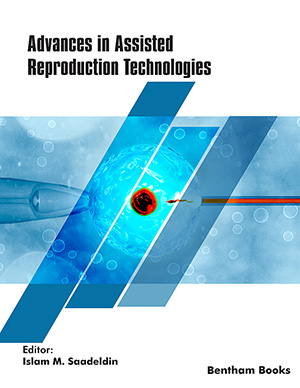Abstract
Background: The absence of absolute clinical indicators and suitable biomarkers hinders the timely diagnosis of women at risk of preterm birth. It influences roughly 12% of births. At delivery and clinical presentation, preterm births are generally inspected based on the gestational period. Different disturbed pathways are associated with the signs of at-risk pregnancies.
Objective: The main purpose of this study is to analyze and explore the serum proteome of early deliveries and help health care professionals to improve the understanding of the progression of preterm birth.
Methods: In the present study, 200 pregnant females of 20-30 years of age were selected. We collected samples of second and third-trimester pregnant females, out of which 40 females delivered preterm. We further divided them into three groups, i.e., extremely preterm group, very preterm, and controls. Overall comparison of serum profiles of all the three groups expressing fourteen proteins ranging between 200-10kDa was made. Serum proteins were isolated by one-dimensional sodium dodecyl sulfate-polyacrylamide gel electrophoresis and photographed by totalLab quant software. Groups were evaluated using the ANOVA Tukey’s Post Hoc analysis.
Results: Proteins of 69kDa and 15kDa expressed a significant decrease when compared with control subjects. In contrast, the proteins of 23kDa expressed a significant increase, while the proteins of 77kDa, 45kDa, and 25kDa demonstrated no considerable variation.
Conclusion: The serum proteins showing significant difference as compared to the control group will serve as predictive biomarkers for at-risk pregnancies. The present study is expected to considerably improve the understanding of the disease pathogenesis along with improved diagnostic and therapeutic approaches leading to better management of pregnancy and reducing the risk of preterm birth.
Keywords: Preterm birth, biomarkers, gestational age, serum profiles, electrophoresis, at-risk pregnancy, early delivery.
[http://dx.doi.org/10.1016/j.jprot.2018.02.002] [PMID: 29448056]
[http://dx.doi.org/10.1016/S2214-109X(17)30142-0] [PMID: 28495266]
[http://dx.doi.org/10.1080/14767058.2017.1297404] [PMID: 28274163]
[http://dx.doi.org/10.1177/1933719113503415] [PMID: 24060632]
[http://dx.doi.org/10.1055/s-0035-1547322] [PMID: 25825961]
[http://dx.doi.org/10.3390/proteomes3040440] [PMID: 28248279]
[http://dx.doi.org/10.1016/j.jprot.2014.03.035] [PMID: 24704856]
[http://dx.doi.org/10.1074/mcp.M112.019372] [PMID: 23033477]
[http://dx.doi.org/10.1016/j.vaccine.2016.03.045] [PMID: 27743648]
[http://dx.doi.org/10.2471/BLT.08.062554] [PMID: 20428351]
[http://dx.doi.org/10.1111/j.1471-0528.2011.02923.x] [PMID: 21401853]
[http://dx.doi.org/10.1186/1755-8794-1-41] [PMID: 18793429]
(b) Vanuytsel, T.; Vermeire, S.; Cleynen, I. The role of haptoglobin and its related protein, Zonulin, in inflammatory bowel disease. Tissue Barriers, 2013, 1(5), e27321.
[http://dx.doi.org/10.4161/tisb.27321] [PMID: 24868498]
(c) Kasai, K.; Nishiyama, N.; Yamauchi, K. Characterization of Oncorhynchus mykiss 5-hydroxyisourate hydrolase/transthyretin superfamily: Evolutionary and functional analyses. Gene, 2013, 531(2), 326-336.
[http://dx.doi.org/10.1016/j.gene.2013.08.071] [PMID: 23994290]
(d) Alberts, A.; Klingberg, A.; Wessig, A.K.; Combes, C.; Witte, T.; Brand, K.; Pich, A.; Neumann, K. C-reactive protein (CRP) recognizes uric acid crystals and recruits proteases C1 and MASP1. Sci. Rep., 2020, 10(1), 6391.
[http://dx.doi.org/10.1038/s41598-020-63318-8] [PMID: 32286427]
(e) Jugnam-Ang, W.; Pannengpetch, S.; Isarankura-Na-Ayudhya, P.; Thippakorn, C.; Isarankura-Na-Ayudhya, C.; Lawung, R.; Prachayasittiku, V. Retinol-binding protein 4 and its potential roles in hypercholesterolemia revealed by proteomics. EXCLI J., 2015, 14, 999-1013.
[http://dx.doi.org/10.17179/excli2015-478] [PMID: 27103892]
(f) Boldt, J. Use of albumin: an update. Br. J. Anaesth., 2010, 104(3), 276-284.
[http://dx.doi.org/10.1093/bja/aep393] [PMID: 20100698]
(g) Gundry, R.L.; Fu, Q.; Jelinek, C.A.; Van Eyk, J.E.; Cotter, R.J. Investigation of an albumin-enriched fraction of human serum and its albuminome. Proteomics Clin. Appl., 2007, 1(1), 73-88.
[http://dx.doi.org/10.1002/prca.200600276] [PMID: 20204147]
(h) Lee, G. Biological implications of human serum proteins recognized by cancerous immunoglobulins. Clin. Res. Immunol., 2018, 1(2), 1-4.
[http://dx.doi.org/10.1055/a-1167-4512] [PMID: 32464669]
[http://dx.doi.org/10.1016/j.placenta.2017.12.017] [PMID: 29405967]
[PMID: 24026993]
[http://dx.doi.org/10.12891/ceog4636.2019]
[http://dx.doi.org/10.1111/aji.12265] [PMID: 24807462]
[http://dx.doi.org/10.1177/1933719108329095] [PMID: 19208789]
[http://dx.doi.org/10.1055/s-2006-956773]
[http://dx.doi.org/10.1093/ajh/hpx020] [PMID: 28338737]
[http://dx.doi.org/10.1080/14767058.2016.1271409] [PMID: 27936992]
[PMID: 24800338]



























